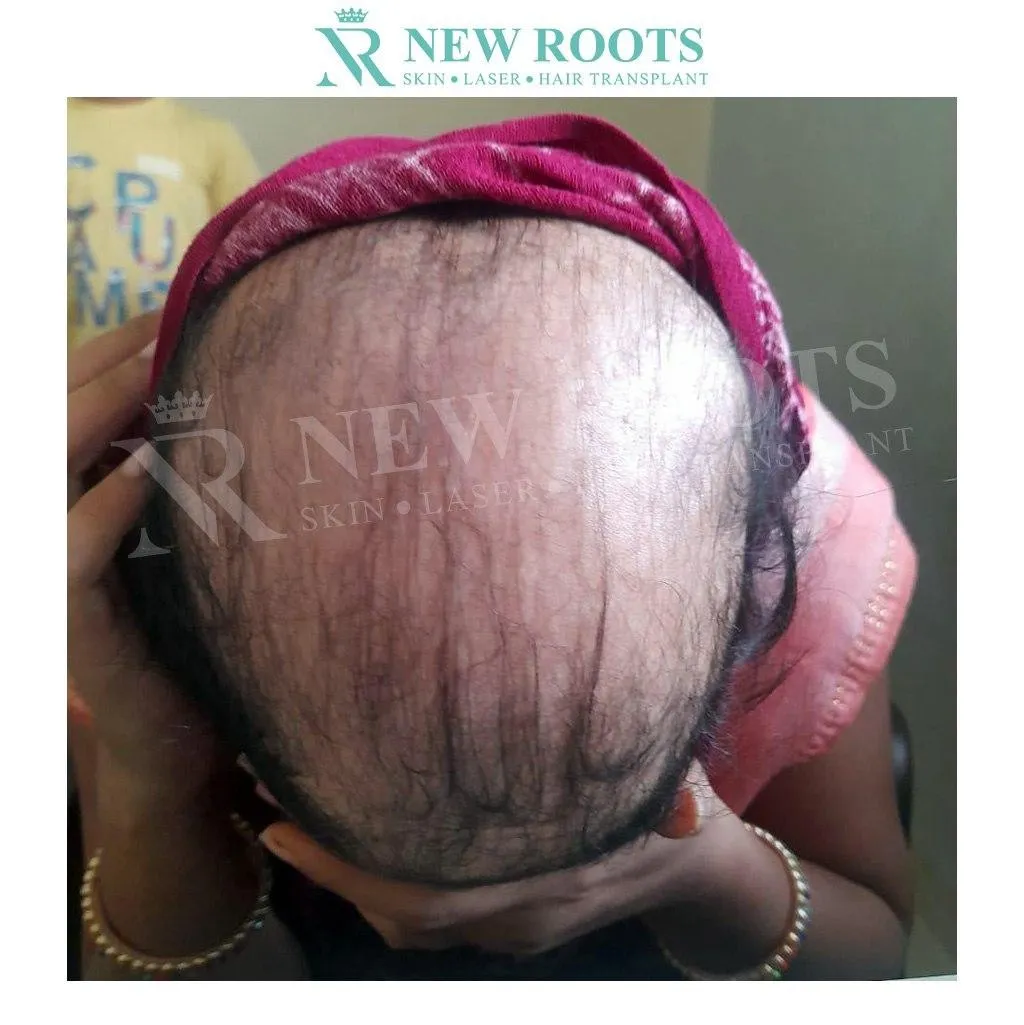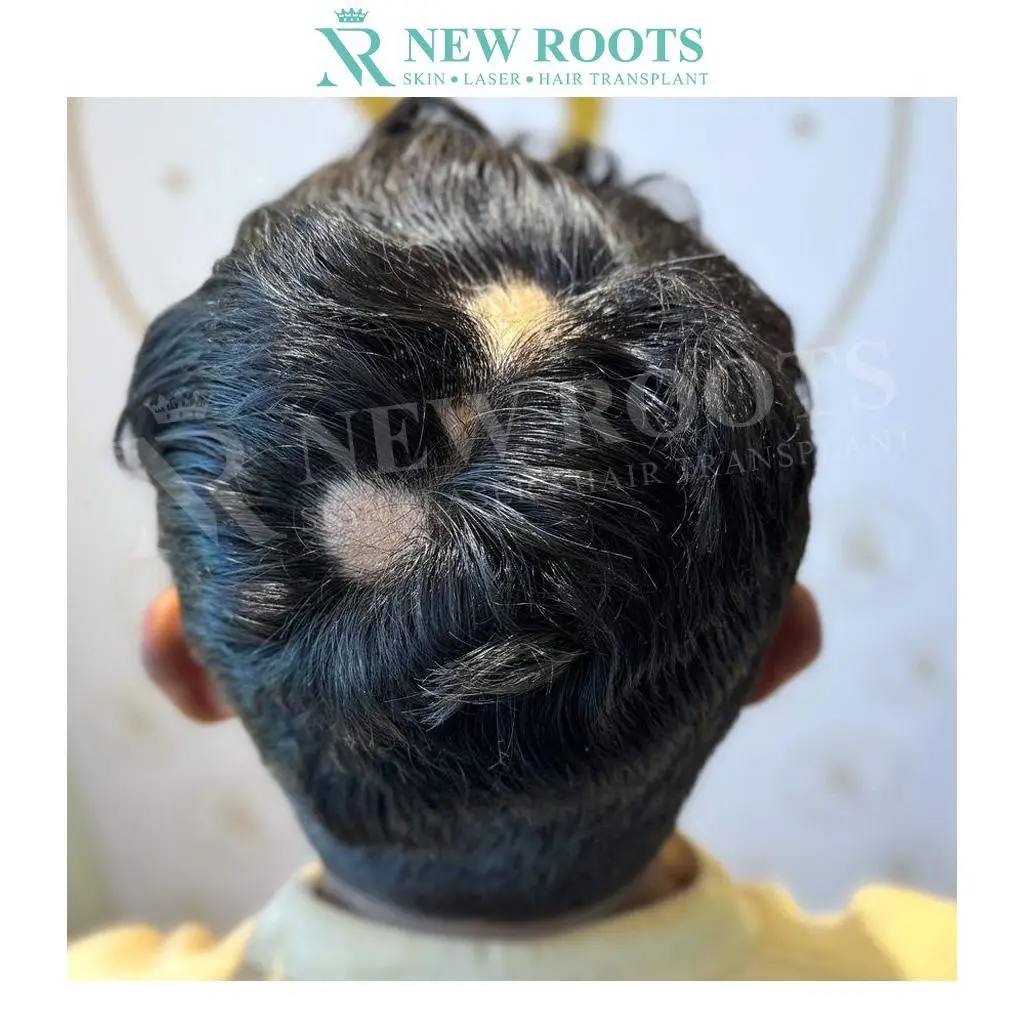Having patchy scalp problems on the scalp can be annoying and embarrassing. Thinning regions or bald patches are a common problem with self-confidence, and you are not the only person who has gone through this issue.
It is with these problems that many people have to cope, and the great news is that there are practical solutions available.
Whether it is using natural remedies at home or applying hair oils or even using treatments such as PRP therapy or hair transplants, there is one way or another to have healthier hair.
The trick is to know the cause behind your premature baldness and get the best remedy. This guide will enable you to regain control, feel good, and love what your hair looks like once more.
Introduction
Are you fed up with having patchy scalp problems and camouflaging the rough areas? You should consider trying something effective: modern hair transplants.
Modern methods are more gentle, faster, and much more natural than before. Stress, genetics, or hair damage from the past, your patchy scalp can be filled and replaced by hair transplants, and you will have the full, luscious look back.
It is not a matter of appearance; it is a matter of feeling like it is yours once again.
You can gladly wave goodbye to imperfect skin and say hello to no more patchiness with the right treatment.
Come discover the magic of what this modern magic can do to your hair and even your life.
Table of Contents
Know Your Patchy Scalp Problems
Scalp patchiness occurs when the patches of hair fall and the parts of the scalp are completely bald or thin. This is contra-junctively referred to as partial alopecia. The cause allows you to treat it better.
These are some of the commonly known reasons:

Alopecia Areata:
This is an autoimmune disease in which your body kills hair roots, causing bald patches.
Fungal Infections: Fungal infections of the skin cause scaly skin and often hair shedding, as in the case with ringworm.
Scalp Dermatitis: an irritation or inflammation on the scalp that may cause itchiness and flaking.
Hormonal or Stress: This sudden hair thinning may be caused by stress or a change in hormones.
Lack of vitamins: Deficiency of vitamins may cause weakness of the hair.
Symptoms To Watch For: Patchy Scalp Problems
Common symptoms associated with patchy scalp problems include:

Balding Patches:
Known as patch alopecia, still widely accepted as small bald/naked patches of alopecia.
Flaking Skin: This may occur mottled with patches and suggests a skin concern.
Itching or Irritation: It is usually used for infection or inflammation.
Exploring Hair Transplant Options
Overview: The process of seeking hair transplant solutions entails knowing various approaches to solving issues of baldness or any patches on the head.
Follicular Unit Extraction: FUE hair transplantation is a process where hair from the donor area is taken individually and then sent to the bald areas. This is minimally invasive and does not cause a linear scar on the frame of a lady.
Follicular Unit Transplantation: In the FUT technique, the strip of scalp is removed from the donor site after which sectioned into small grafts, which might be transplanted. It can produce more grafts, but it poses a straight-line scar on the head.
Scalp Reduction: This surgery means that some portions of the scalp that are bald are reduced, and the portions that are covered with hair are pulled over the bald areas.
Flap Surgery: Includes definitive surgery with slides of the scalp containing hair follicles done to cover the communicating balding spots.
Tissue Expansion: This method employs the use of a silicone balloon that gradually pulls the scalp, thus providing more skin area for transplant.
When Does Hair Restoration Begin?
Initial Consultation: The hair restoration programs start with an examination of the patients, and then consultants have to explain the patient’s prospects for hair restoration and the patient’s answers to the questions.
Scalp Analysis: An initial Scalo-modified light microscopy technique is used to evaluate the severity of hair loss and the state of the hair and follicles.
Treatment Planning: Thus, according to the results of the diagnostic examination, the surgical strategy is developed concerning the characteristics of hair transplantation or other remedies.
Choosing Techniques: Measures like FUE or FUT mean the procedure is designed to give it a natural look.
Procedure Execution: A hair transplant is done under local administration of anesthesia, skillfully dissecting and transplanting hair follicles to the personalized balding zone.
Post-Operative Care: Subsequently, based on the treatment performed, patient-specific post-procedure advice is given concerning wound healing and hair regrowth.
Follow-Up Visits: Rehabilitation checkup entails a series of appointments because it’s vital to assess hair boom results in addition to recuperation progress.
Sessions with Dermatologists and Plastic Surgeons
In the first instance, the health care providers will assess the sporadicity of scalp issues. Dermatologists and plastic surgeons also consult to develop a daily course of action that suits each patient.

Evaluating the Donor Site
Even though hair transplant is a safe process, its success strongly relies on the state of the donor area.
The density and general status of the scalp should be measured to determine the suitability of the candidate for transplant surgery.
Learning about alopecia and its forms of management.
Alopecia may result in low self-esteem and, therefore, should be handled with a lot of caution.
Different Types of Alopecia
Alopecia is classified into several types, affecting the scalp in varied ways:
Alopecia Areata: Sudden hair loss in patches.
Androgenetic Alopecia: Genetic male and female pattern baldness.
Several treatments can help manage alopecia, including:
Medications: For instance, minoxidil and finasteride.
Hair Restoration Techniques: Including hair grafting.
Benefits and Side Effects of Hair Restoration
Possible Side Effects
Potential side effects of hair transplant surgeries include:
Contamination: Although it is a comparatively rare worry, it may increase after the process has been completed.
Allergic Reactions: These can be attributed to anesthesia or different medicinal drugs used for the duration of the procedure.
Long-Term Benefits
The benefits of hair transplants are numerous:
Increased self-esteem.
Thicker hair in the regions of the scalp from which hair had receded in the past.
Recovery and Follow-Up Visits
Recovery from a hair transplant procedure varies among individuals but generally includes:
Post-Operative Care: Prescription of medication and treatment procedures for the scalp.
Follow-Up Visits: These are required to assess the state and appearance of the scalp and hair growth.
The Role of New Roots - Skin, Laser & Hair Transplant Clinic
The New Roots – Skin, Laser & Hair Transplant Clinic is the first clinic to treat patchy scalp problems and hair reconstructions.
They are usually able to spend personal time with their patients and review respective concerns that would lead to tailored treatments.
They perform hair transplantation at the clinic with the assistance of experienced dermatologists and surgeons who are backed by modern tools and equipment.

Alopecia & Scalp Solutions
Get to know the key findings in the evaluations for alopecia and other diseases of the scalp.
Hair restoration techniques are more sophisticated than basic medical procedures, such as surgical and nonsurgical interventions.
Conclusion
Having patchy scalp issues does not imply that you should feel trapped or that you should lack confidence.
And with proper attention, proper products, and perhaps the assistance of a hair specialist, you will begin to see actual results.
Scalp problems are usually due to stress, poor nutrition, or health-related conditions, and regardless of these, there can always be a solution to them.
You must be patient and regular and care about your hair so that it can become what it deserves.
Don’t forget that there is nothing wrong with asking for assistance and taking some actions towards the improvement of hair.
You are a winner, and your sorry-looking bald head will no longer be a definition of who you are.
Q&A ASK:
Scalp issues can be partial and caused by different factors, for instance, alopecia areata an autoimmune disease, some types of fungus, dermatitis, or stress that causes hair loss. The treatment and management process depends mostly on the identification of the root cause of the issue at hand.
If there is a medical shampoo, topical steroid, or in cases where the baldness is extreme, then a hair transplant may be done. Consulting a dermatologist helps one receive a treatment that is best suited for the specific condition that one has on the scalp and hair.
For the most part, the problems with a patchy scalp, including alopecia areata, are not easily transmissible. But others, for example, ringworm, can be passed on by touching the affected skin area or using the same towels and other articles. This can be checked through proper hygiene to avoid contact with the virus by those around the patients.
It is recommended that you should see a physician, for example, in case of sharp, fast hair loss, constant itching, or when the problem of the scalp becomes worse after home cures. This is because early medical treatment will help in offering additional treatments and halt the hair loss process.
Yes, patchy scalp problems can affect self-esteem and psychological state since individuals always meet people at social events. Individuals who get treatment and support can be able to stand tall and have the best quality of life they desire.





